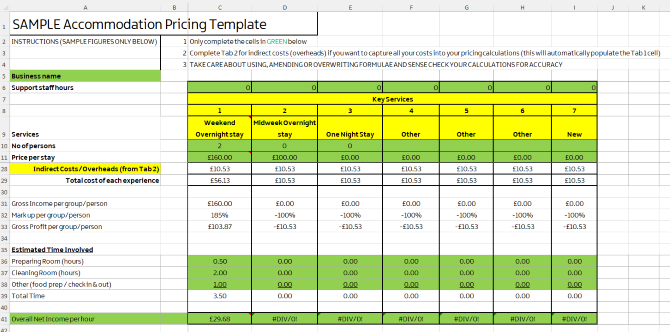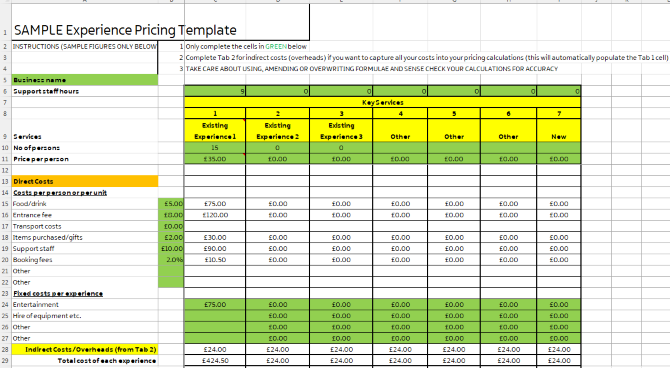Pricing Strategies
Who is this for?
This is for you if you want to understand more about pricing strategies and how they will affect your tourism & hospitality business sales and your profitability. You can consider these at start-up phase, when you are considering a new product or service or for your existing products or services.
Strategies
There are many different pricing strategies to attract customers to your business and some of the main ones are detailed here. You may find that some will work better than others, depending on your own market and the stage your business is at. You may even find that you can use different strategies for different products or services and so a combination may work well for you.
Whatever you choose, make sure that you keep your pricing under regular (at least annual) review and that you ensure it continues to serve the purpose that you intended.
1. Price skimming
Skimming is a strategy that you can use when you are introducing a new product or service to the market. It involves setting high prices when it is first introduced as yours is the only product or service available and then over time gradually reducing your price as more competitors enter the market.
This allows you to make higher profit at the initial stage and then reduce it over time.
2. Market penetration pricing
Market penetration pricing is generally regarded as the opposite of price skimming. You enter the market by undercutting your competitors, rather than starting high and slowly reducing your prices. This can result in low profits or even losses in the early stages and you may use this to gain market share or cross-sell other goods and services at a higher price.
3. Value-based pricing
Value-based pricing is similar to premium pricing where a business sets its pricing based on what they believe a customer believes a product is worth and is prepared to pay. These products or services tend to be more “unique” or “exclusive”.
While it is difficult to determine exactly what the extra value is worth, research in the development stage with focus groups or potential buyers can help establish this.
4. Cost plus pricing
Cost-plus pricing involves determining the price of a product or service by calculating the cost of producing one unit and then applying a percentage mark up to that. This generates a potentially desired rate of return. Costs will include variable costs per unit plus any fixed costs that would then be allocated to each unit.
5. Psychological pricing
This is also known as “ just-below pricing” your products or services so that they are designed to have a positive psychological impact. For example, selling a product at £3.95 or £3.99, rather than £4.00.
If you price your product or service at £99.99, many customers will have the impression of it being considerably less than £100.00. A minor distinction in pricing can make a big difference in sales.
Which pricing strategy is right for you?
Each of the above strategies offers different upsides and downsides and which one you choose will depend on many different factors.
Whichever you choose, make sure that you are making sufficient profit to cover your costs and provides you with sufficient return for the time and effort that you put in to delivering it.
And for larger businesses that offer different products and services in different markets, you could consider developing a written Pricing Strategy or Policy that is based on what is appropriate for your business. This gives structure and clarity.
Useful Sources
Accommodation Pricing Template

Experience Pricing Template
